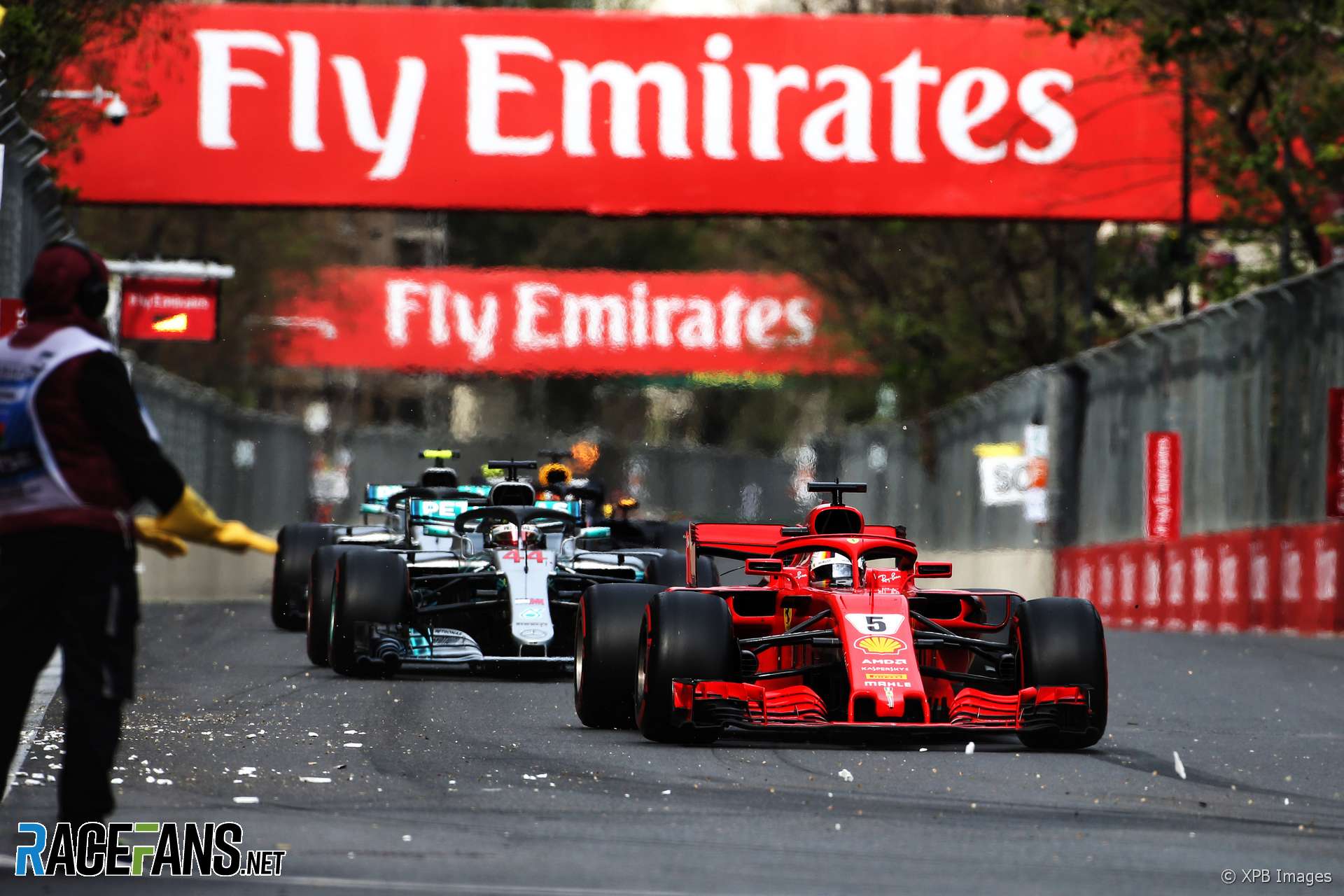
Sebastian Vettel’s priority in the Azerbaijan Grand Prix was covering off the threat from Lewis Hamilton. But did that leave him vulnerable to an attack from Valtteri Bottas?
Vettel said after the race he encouraged Ferrari to time his pit stop to cover off any threat of being passed by Hamilton. The Mercedes driver had closed on him before their pit stops but lost several seconds by locking up and running wide at turn one.
Nonetheless Vettel was alert to the threat from Hamilton. After the Mercedes driver made his pit stop in he urged Ferrari to respond soon afterwards and ensure he stayed well clear of his rival.
“I was happy to pit where we pitted because [there] was always a headwind down the main straight,” Vettel explained. “I think you saw when Lewis was behind even though he was three, three-and-a-half seconds behind he gained massively in the last sector because with the tow the car in front, even if it’s far away, still makes a difference.
“So I spoke with the team and said let’s not stay out too long, let’s not wait until Lewis on the fresh tyres eventually catches up and we come out only two or three seconds in front and then he might get in the tow window.”
However when Vettel rejoined the track after his pit stop he had considerably more than three seconds in hand over Hamilton – almost eight, in fact:
That suggests Vettel could have stayed out quite a bit longer and still easily had a safe margin over Hamilton. Was he so concerned about the threat from Hamilton he urged Ferrari to pit him too soon?
If so, did this leave him more vulnerable to the threat from Bottas? The other Mercedes driver extended his first stint in the hope of being able to use a softer set of tyres at the end of the race to attack the leaders, or to benefit from a Safety Car deployment. The latter eventually happened and put Bottas on course to win.
It gives the impression Vettel selected his strategy based on which of his rivals he considers the greater long-term threat in the championship, rather than which was the greatest threat for the race victory on the day. But that isn’t necessarily the case.
Vettel had another motivation for pitting when he did: his tyres had gone and his lap times had risen. Not only was Hamilton quicker than him on new tyres, Bottas was faster on his old rubber too, by up to seven tenths of a second per lap:
Advert | Become a RaceFans supporter and
Leaving Vettel out on his older tyres would only cost him time, particularly with Bottas catching him so rapidly. Before the race Bottas commented on how the Ferrari seemed to have poor tyre life at the end of a stint. He exploited this brilliantly, pushing his super-soft tyres hard after Vettel pitted and reducing his lap times by almost two seconds to a level Vettel (and Hamilton) couldn’t match even on newer rubber.
At the time the Safety Car out Bottas was pushing Hamilton out of his Safety Car ‘window’ (i.e., reaching the point where he would have been able to pit and come out ahead of his team mate) and had run late enough in the race to be able to use ultra-soft tyres for a final stint charge to catch Vettel.
We didn’t get to see how that race would’ve unfolded. But it’s striking that for the third grand prix in a row, before Safety Cars disrupted the picture, the real race was not Vettel versus Hamilton, but Vettel versus Bottas. Perhaps that will figure more highly in Vettel’s thinking from now on.
Advert | Become a RaceFans supporter and
Quotes: Dieter Rencken
